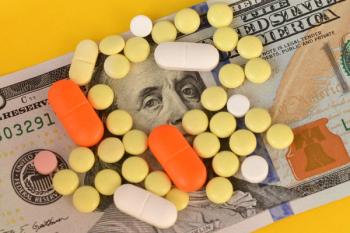
Recession Ahead: How to Prepare Your Pharmacy
Many independent pharmacies closed during the last recession.
Depending on who you ask, the United States may be just weeks away from a recession—if not already in one—and a looming recession will mean challenging times are ahead for independent pharmacies.
One only needs to look back at the years 2007 to 2009 to see the impact that a recession can have on a pharmacy business. A national pharmacy workforce survey conducted by the Midwest Pharmacy Workforce Research Consortium following the last recession1 found that pharmacists worked more hours due to the economic turmoil, with 60% of independent pharmacy owners rating their working hours and workload as excessively high.
The prospect of another recession may be frightening to many pharmacists, but there are ways to prepare—and survive.
Many financial experts recommend having 3 to 6 months of expenses tucked away for emergencies; if lean times occur these savings mean that the pharmacy will have the money on hand to ride through the tough times.
Shahida Amar-Choudhry, PharmD, owner of Palms Pharmacy in Tampa, Florida, said that pharmacists should already be preparing to stay ahead of the game and try new techniques and tactics to bring other sources of revenue in. “I know a lot of pharmacy owners who are very conservative and don’t want to try anything new,” she said. “For example, the COVID-19 tests that we can run under a patient’s insurance and bill our insurance—95% of pharmacy owners did not do that because they didn’t want to take the risk.”
She also stressed the importance of offering different services than those of large retail chains to help the pharmacy stand out as the place to go when people are being more frugal with their money. “Be innovative and do something new,” she said. “Pharmacists shouldn’t be afraid to take some chances and find things that will appeal to their customer base.”
Be sure your team is ready for anything and let them know there may be more work and increased hours to make up for any loss of business. You may realize that you don’t need as large a staff as you have, so it’s a good time to get rid of any unproductive employees.
Another tip is to maximize delivery options. Establish a minimum delivery amount so that customers will buy more. Pharmacies can also expand their reach as more patients turn to online ordering.
Rajesh Chotalia, a health and wellness consultant, speaker, and independent pharmacist of 43 years, shared the importance of pharmacists investing in their community so that when tough economic times rear their ugly head, community members continue to utilize the pharmacy and its services.
“You need to invest time, money, and efforts in your area to build trust and relationships that will give you a long-term solid business that is built on service, care, and love towards your community,” he said. “This will build your referral base and you will get an influx of new patients from other healthcare providers, as well as your existing patients.”
Chotalia also recommended visiting the offices of local health care providers a few times a year to talk about how your pharmacy is helping patients—and to keep the connection strong. “You can suggest other services that they may be able to use that will help them and their patients like MTM, vaccinations, free home deliveries for their medications, automatic refill reminders, and personal calls to check on their compliance so they do take their medication without running out,” Chotalia added.
Having an active presence on social media is another way to adverse services that the pharmacy offers. New posts shared on a regular schedule keep followers invested. Pharmacists can also appear on local podcasts or host community events to help expand their reach. Sharing information about these events with your local health care providers can lead to even more promotion.
Reference
- 2009 National Pharmacist Workforce Survey. Midwest Pharmacy Workforce Research Consortium. Published March 1, 2010. Accessed November 30, 2022.
https://www.aacp.org/sites/default/files/2009_npws_executive_summary.pdf
Newsletter
Pharmacy practice is always changing. Stay ahead of the curve with the Drug Topics newsletter and get the latest drug information, industry trends, and patient care tips.

















































































































